I visited with the Pollocks in their garden on a very hot day at the end of July and enjoyed a personal tour of their amazing native and perennial plant garden. The spring and early summer blooms had begun to fade but there were plenty of beautiful plants and flowers to see.
Lynda Pollock is a retired science and biology teacher, a Georgia Master Gardener, and former president of the Gwinnett County Master Gardeners Association. She and her husband, Bob, are also members of the the Georgia Native Plant Society (GNPS).
Bob, also a retired teacher, is very knowledgable and refers to himself as the “Master Gardener’s Assistant.” Lynda lovingly calls him the “Spade Man” because he does her digging, runs loads of mulch, and handles the heavy labor in the garden, with occasional help from their sons.
There have been many hard manual labor projects over the years as the Pollocks thinned out pine trees, pulled out invasive plants, and developed their soil. They have transformed their entire property into a valuable habitat for insects, birds and wildlife with pollinator-friendly plants that are protected from pesticides.
Gradual Transformation to a Biodiverse Landscape
The Pollocks have been gardening on their property since 1999 but they began making very significant changes during the drought and watering restrictions of 2008. Bob removed 100 feet of grass and tilled the ground before planting blueberry bushes along the driveway. The Pollocks and their neighbors have enjoyed year-round beauty. They harvest 80 pounds of blueberries per year and the birds have plenty to eat as well.
 Native honeysuckle: Lonicera sempervirens (coral honeysuckle) is well-loved by hummingbirds in the Pollock's garden.
Native honeysuckle: Lonicera sempervirens (coral honeysuckle) is well-loved by hummingbirds in the Pollock's garden.
In 2018, the Pollocks began working on the entire front yard. They tilled the area then put down Soil³ compost and deep wood chip mulch. They added a path to the front of the house and began planting a mix of native and non-native plants from the front porch all the way to the street. Native ginger, salvia, blue-eyed grass, black-eyed Susan, and several other natives were planted with daylilies and mums for color.
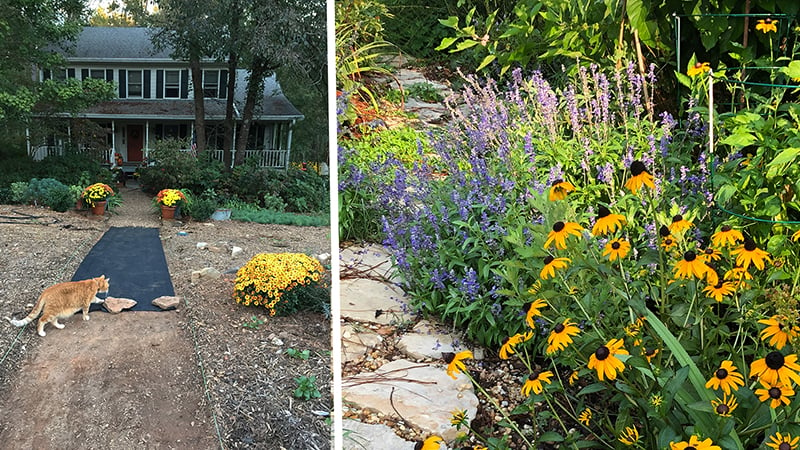 Before & After: Today the Pollock's front yard is packed with native plants all the way out to the street.
Before & After: Today the Pollock's front yard is packed with native plants all the way out to the street.
Lynda has always been interested in creating biodiversity and planting for birds on their own property. With help from a Boy Scout working on his Eagle Project, she also spearheaded a project to create a woodland path and outdoor classroom at Five Forks Middle School.
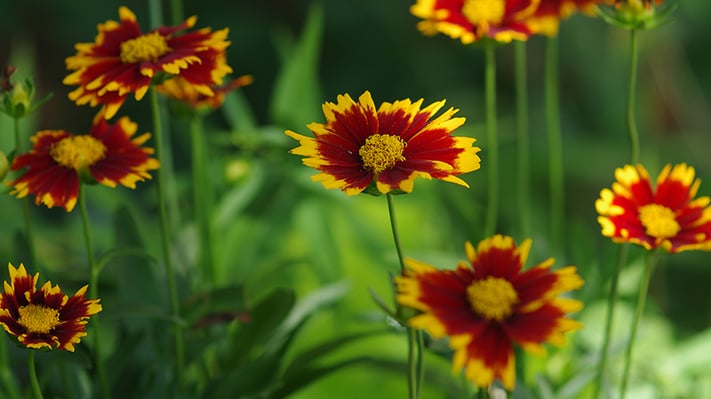 Gaillardia pulchella (Indian blanket flower) a southeastern native perennial
Gaillardia pulchella (Indian blanket flower) a southeastern native perennial
Doug Tallamy, professor and author of numerous books, including Bringing Nature Home, has been an inspiration to the Pollocks since Lynda heard him speak at the GNPS conference in 2018. She immediately purchased a few of his books and shared one of his videos with Bob and they were hooked.

He wants to make every property owner aware of our ecological responsibilities including support for the food web, sequestering carbon, cleaning and managing watershed, and supporting pollinators. Through his work, he educates and urges individual homeowners, property owners, land managers, farmers (and anyone with some soil) to take steps to increase biodiversity in their own landscape. He encourages them to plant native plants, remove invasive plants, and share their goals and progress widely to promote this movement to others.
Tallamy is also the co-founder of Homegrown National Park and the Pollocks registered their garden and landscape intentions “On The Map” in 2018 when the program was first introduced.
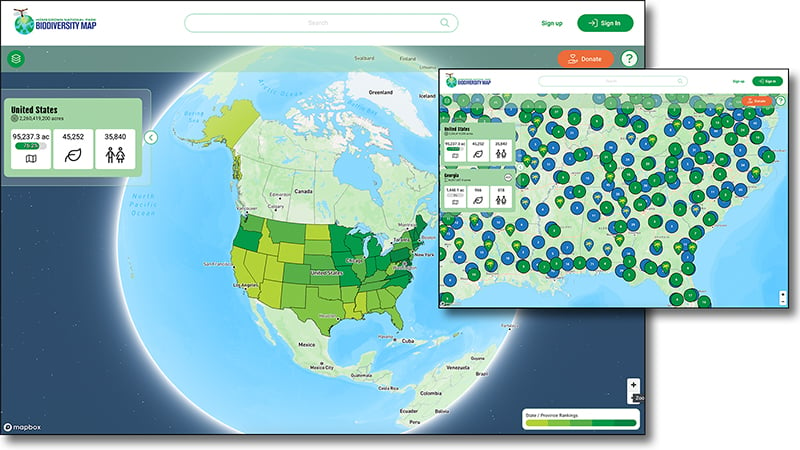 The interactive Biodiversity Map was designed to promote conservation and conscientious stewardship of private property owners across the country. Participants can view progress at national, state, and local levels by zooming in on this map.
The interactive Biodiversity Map was designed to promote conservation and conscientious stewardship of private property owners across the country. Participants can view progress at national, state, and local levels by zooming in on this map.
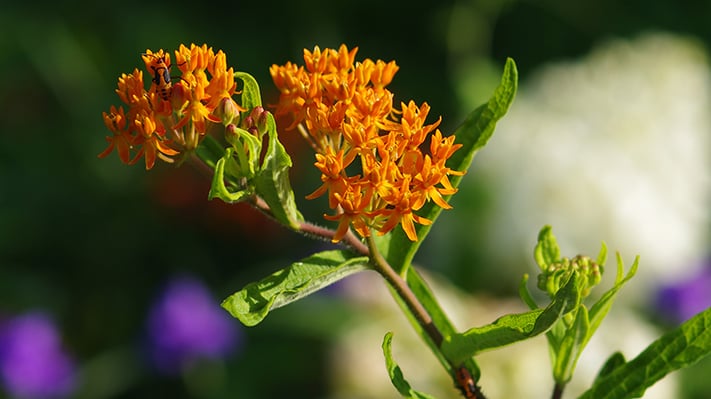 Asclepias tuberosa (orange butterfly weed) - flowers
Asclepias tuberosa (orange butterfly weed) - flowers
 Asclepias tuberosa (orange butterfly weed) - seed pods. Some are open and dispersing the white, fluffy seeds.
Asclepias tuberosa (orange butterfly weed) - seed pods. Some are open and dispersing the white, fluffy seeds.
Clearing and Restoration of the Back of the Property
In 2019, the Pollocks began to expand their efforts to the back of their property. During COVID isolation in 2020, the whole family became involved in the heavy labor of clearing the wooded area. Bob called this work the “COVID Project” as they pulled out lots of invasive plants including privet, English ivy, honeysuckle, plus stumps and deep roots.
The area was so full of tree roots and clay that there wasn’t much soil so they began amending with Soil³ compost. They built planting beds and layered paths with heavy mulch to hold weeds back before they began to bring in the native plants.
Lynda plants a lot of plants close together, with ground covers at the base to keep weed pressure down in the beds. Since they have begun to develop this area, they have seen a dramatic increase in the number of birds, recently identifying more than 67 different species.
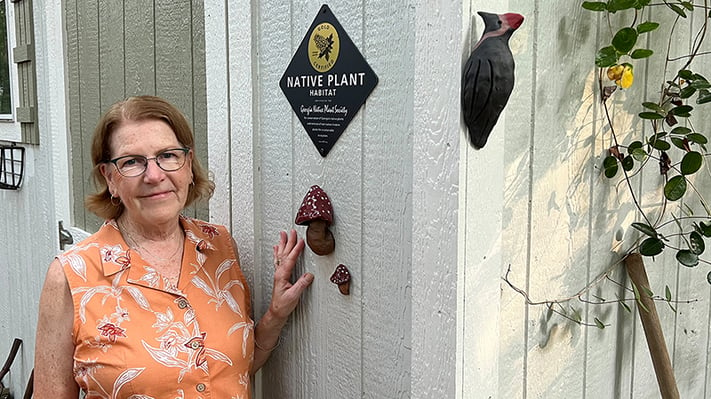 Georgia Native Plant Society Gold Certified award indicates that 2/3 of the yard contains native plants, eradication of invasive plants must be in process, and the applicants practice 4 out of 8 sustainable practices.
Georgia Native Plant Society Gold Certified award indicates that 2/3 of the yard contains native plants, eradication of invasive plants must be in process, and the applicants practice 4 out of 8 sustainable practices.
Recognition, Certifications, and Outreach
The Pollocks have been adding to their certifications for many years to inspire and educate others.
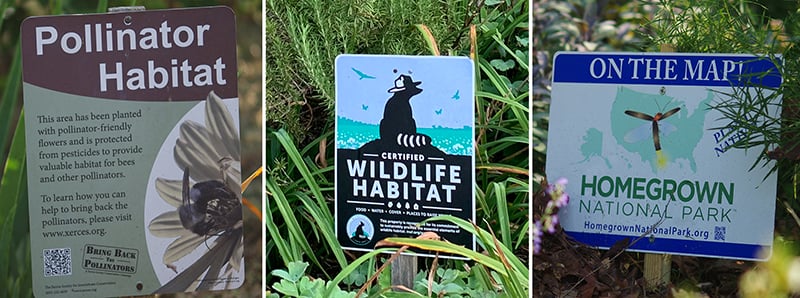
They received the National Wildlife Certification in 2014 and the Georgia Green Landscapes Certification, through UGA Extension in 2017. Their garden was featured in the 2022 GCMGA Tour and that same year they received the prestigious Gold certification for the back of their property from the Georgia Native Plant Society. In addition to registering on the Homegrown National Park map, the Pollocks signed the “Pollinator Pledge”, a pollinator conservation program with the Xerces Society for invertebrate conservation.
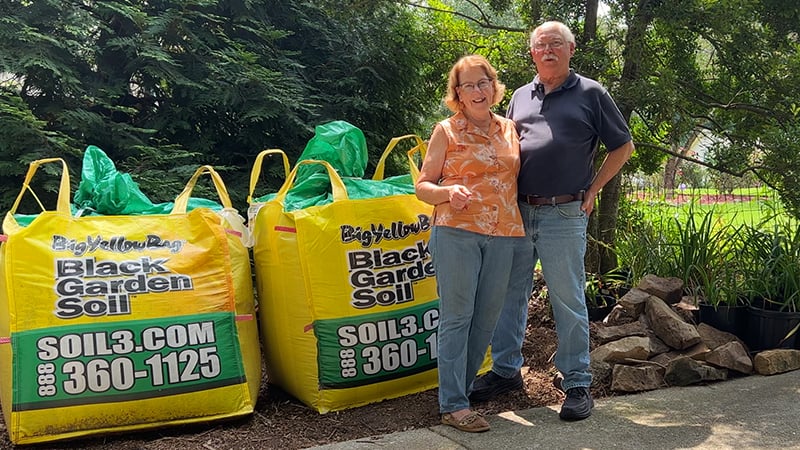
The Pollocks believe in investing in their soil and they love Soil³. It’s difficult to grow in Georgia red clay. They’ve used lots of Soil³ compost over the years to build their soil and top dress plants and shrubs annually. Lynda says, “When the soil is healthy, the plants are healthy and you don’t need to use chemicals.”
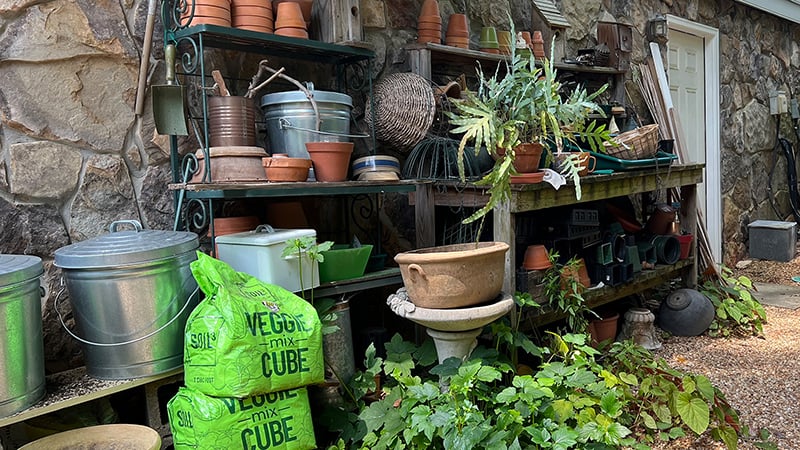
Video and photography by Laurie and Simon Wakefield. Lynda Pollock also contributed photos taken in their garden in prior years and seasons.

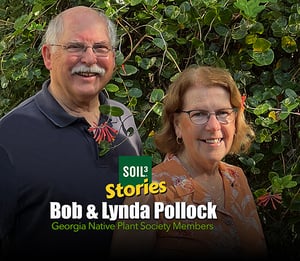


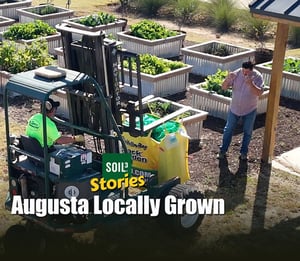

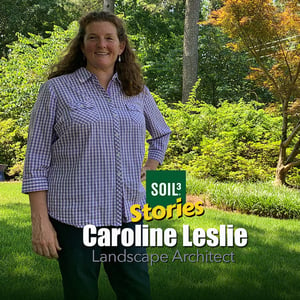
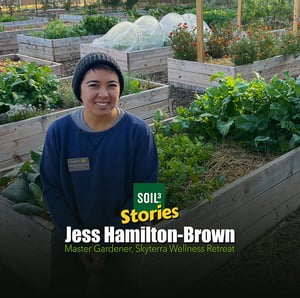

Did this help you out? Have any questions for clarity? Leave a comment below!